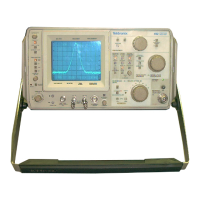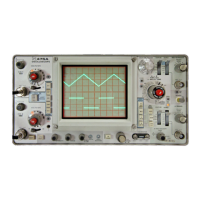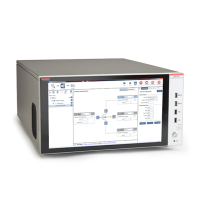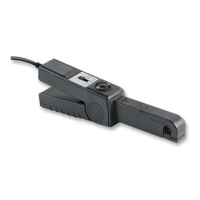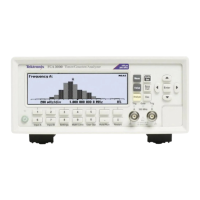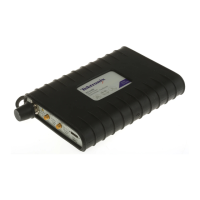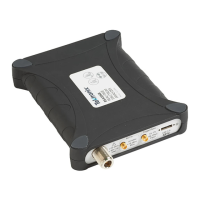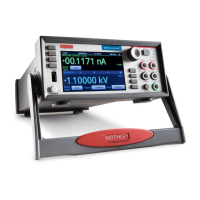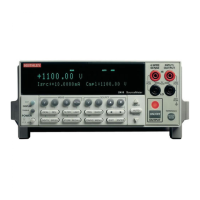3. Adjust the FOCUS control for
vertical sections of the display.
4. Repeat the two adjustments for
display definition.
Trace Alignment
optimum focus of the
best overall focus and
If a free running trace is not parallel to the horizontal
graticule lines, the trace may be aligned by means of an
internal Trace Rotation adjustment. Refer to the Calibration
section.
Fig. 2-6. INTENSIFIER operation.
2-8
Operation of the INTENSIFIER and CONTRAST
Controls
These controls are used to suppress the brightness of the
display baseline when large variations in display brightness
are not desirable; for example, when photographing or view-
ing displays at very slow sweep rates.
The INTENSIFIER
adjusts the height of the suppressed baseline. The CON-
TRAST adjusts the degree of contrast between the suppressed
portion and the intensified portion of the display.
The adjustment of the CONTRAST is optional; however,
it is normally set to produce a suppressed portion that is
still visible, so the intensity level of the vertical and hori-
zontal portions of the display are equalized at slow sweep
rates.
The INTENSIFIER control is normally operated in the OFF
position, so the display and baseline are intensified. It is
turned on to suppress the baseline at slow sweep rates, in
preparation for display photography. See Fig. 2-6.
Signal Application
The application of any RF signal to the Type 491 is deter-
mined by its frequency and level. Signals between 10 MHz
and 275 MHz are applied to the Band A, BNC connector.
Frequencies from 275 MHz to 2 GHz are applied to the band
B, N-type connector, and band C covers the remaining fre-
quency range from 1.5 GHz to 40 GHz. Signals should be
applied through the standard cables supplied with the ac-
cessories. Cables such as RG 9B/U will give satisfactory per-
formance to approximately 12.4 GHz. Signals in the 12.4
GHz to 40 GHz range are applied to external Waveguide
Mixers which connect through a two-foot coaxial cable and
a Waveguide Mixer Adapter to the input receptacle. The
Waveguide Mixer Adapter replaces the Coaxial Mixer As-
sembly in the input receptacle.
The selection of mixers and adapters for the frequency
coverage is as follows:
1.5 GHz to 12.4 GHz-Plug-in Coaxial Mixer, Tektronix
Part No. 119-0096-00.
12.4 GHz to 40 GHz-Waveguide Mixer Adapter, Tek-
tronix Part No. 119-01 04-00; Coaxial Cable, Tektronix Part
No. 012-0115-00 and one of the following Waveguide Mixers.
Waveguide
( EIA
Band designation)
Ku WR62
K WR42
Ka WR28
Frequency
Range
12.4 GHz to
18.0 GHz
18.0 GHz to
26.5 GHz
—
18.0 GHz to
40.0 GHz
Flange
Tektronix
Type Part
Number
UG-419/U 119-0097-00
UG-595/U 119-0098-00
UG-599/U 119-0099-00

